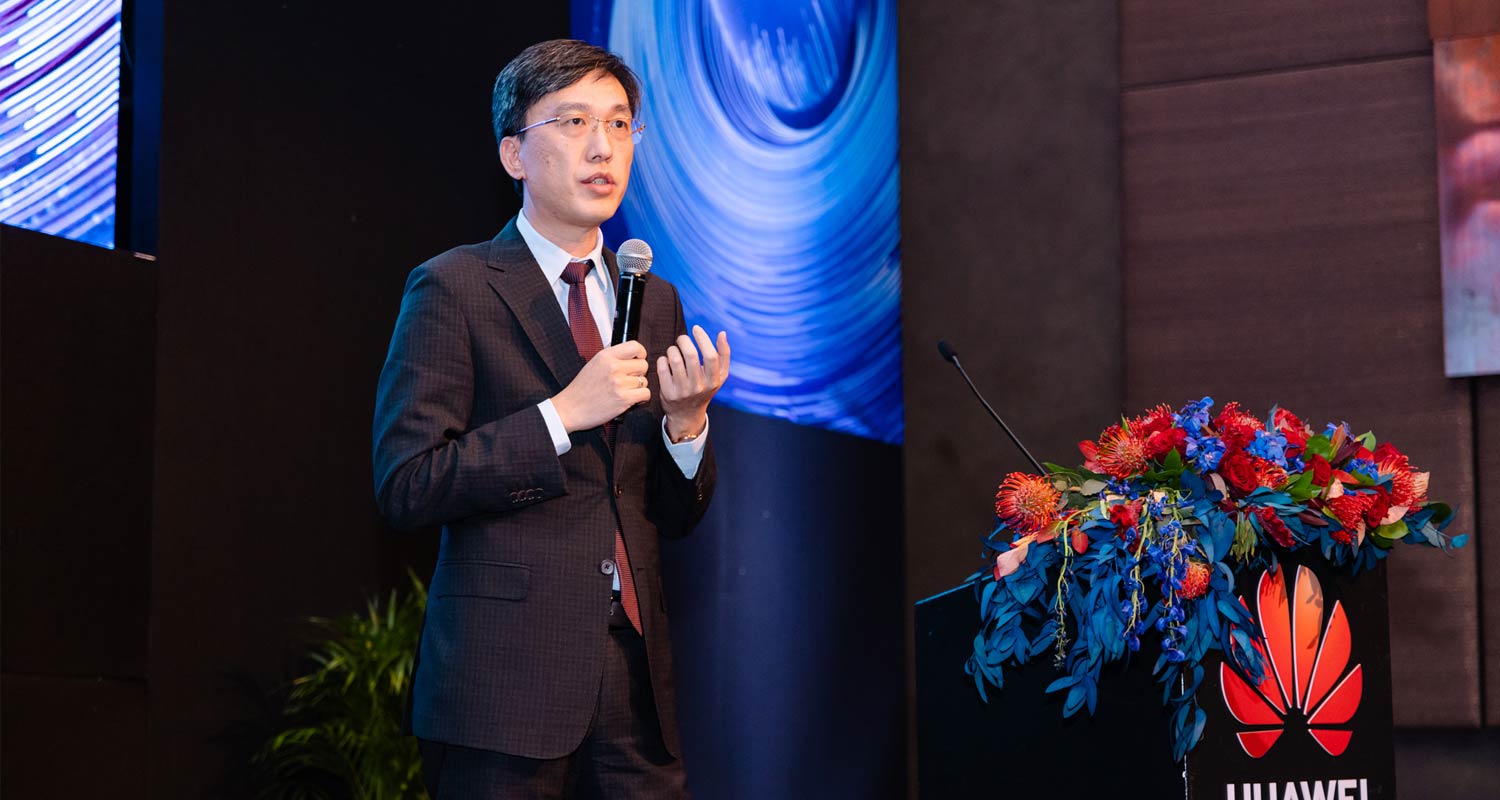
 Opening speech by Li Chen, vice president for sub-Saharan Africa at Huawei
Opening speech by Li Chen, vice president for sub-Saharan Africa at Huawei
Huawei this week held its Global Optical Summit in Johannesburg. Run under the theme of “F5G-A (F5G Advanced), the foundation for industrial intelligence”, the summit attracted more than 300 industry customers and partners from South Africa, Kenya, Nigeria, Tanzania and other countries.
The summit also saw Huawei release a series of F5G-A products and solutions for sub-Saharan Africa and the launch the OptiX Club member recruitment event in the region to drive local industry intelligence.
As optical technologies evolve, their contribution to intelligent transformation in various fields only becomes more important.
“As a leader in the optical industry, Huawei is committed to working with partners and customers to promote enterprises’ digital and intelligent transformation to every corner of sub-Saharan Africa,” said Li Chen, vice president of sub-Saharan Africa for Huawei, in his opening speech.
 Gavin Gu, president of Huawei’s enterprise optical network domain, delivering a keynote speech
Gavin Gu, president of Huawei’s enterprise optical network domain, delivering a keynote speech
In a keynote speech title “F5G-A, the foundation for industrial intelligence”, Gavin Gu, president of Huawei’s enterprise optical network domain, pointed out that industrial intelligence brings three new trends to the optical industry. “F5G-A shows us a clear technology evolution road map for these trends. I believe that with the joint efforts of customers, partners and Huawei, we will achieve win-win cooperation in Industrial intelligence.”
 Huawei launches F5G-A products and solutions
Huawei launches F5G-A products and solutions
For medium- and large-sized campuses in education, healthcare, hospitality and manufacturing industries, Huawei launched the next-generation FTTO 2.0 Solution, in which Huawei uses XGS-PON Pro and Wi-Fi 7 technologies to upgrade bandwidth, networking, experience and O&M, achieving 12.5/25G to rooms and 2.5/10G to APs and desks to build a green 10Gbit/s all-optical campus.
For energy and transportation production networks, Huawei launched Huawei OptiXtrans E6600, the industry’s first optical transmission product that supports the fine-grain OTN (fgOTN) standard, to help customers build highly reliable communication networks in the intelligent era.
At the summit, Huawei also released a fgOTN technical white paper that provides a detailed description on the fgOTN standard series, including key technologies and application scenarios. It proposes the industry target network architecture based on the fgOTN standards and describes the prospect of future optical communication applications in a range of industries.
Prasa hopes to carry out more joint innovations with Huawei to promote intelligent railway development
In addition, for data centre interconnect (DCI) scenarios in the intelligent era, Huawei launched the next-generation DCI platform, Huawei OptiXtrans DC908 Pro, which supports terabit-per-second-per-wavelength to ensure efficient, highly secure and highly reliable transmission of services between data centres.
At the summit, multiple customer representatives from sub-Saharan Africa delivered speeches and shared their stories about their cooperation with Huawei in all-optical network construction in the region.
“Digital transformation is an inevitable trend to improve port operations efficiency and expand business models,” said one such customer, Sudi Mwasinago, operation GM of Kenya Ports Authority (KPA). “KPA worked with Huawei to build a smart, green, efficient, and secure port network, which can satisfy service development requirements in the next decade.”
Railway perimeters are the first safety barrier in isolating the operating area of a train from its surroundings. Here, Huawei technology is improving operations for Passenger Rail Agency of South Africa (Prasa).
Power sector
“Huawei’s optical-visual linkage solution provides a new direction for railway perimeter security through both optical and visual verification,” said Athanacious Makgamatha, GM of the signalling and telecoms department at Prasa.
“Prasa hopes to carry out more joint innovations with Huawei to promote intelligent railway development.”
Optical technologies are having a similarly profound impact on the power sector.
Huawei MS-OTN devices provide ultra-high bandwidth of over 100Gbit/s to support future services
“The electric power industry is rapidly evolving. In addition to future network development, existing services must also be considered,” said Kgomotso Setlhapelo, chief engineer: telecoms, National Transmission Company of South Africa (NTCSA), part of Eskom. “Huawei MS-OTN devices provide ultra-high bandwidth of over 100Gbit/s to support future services. In addition, they are compatible with SDH hard pipes and MPLS-TP technologies to guarantee network reliability and flexibility.”
Finally, Gavin Chen, vice president of enterprise network marketing and solutions sales (optical domain) at Huawei, announced the initiation of the OptiX Club member recruitment event. By building industry technical communities, Huawei aims to promote regional industry data intelligence.
For more information about Huawei optical products and solutions, visit e.huawei.com/en/solutions/enterprise-optical-network.











Comments